Stifle Braces - an alternative to surgery
Cranial Cruciate Ligament (CCL) tears or ruptures are one of the most common orthopedic injuries seen in dogs with a variety of causes including activity, joint health, breed, age and obesity. The cranial cruciate ligament (CCL) attaches the back of the upper leg bone (femur) and the front of the lower leg bone (tibia) and acts to stabilise the knee (stifle) joint during weight bearing at walk, trot or run.
When the ligament is torn, each time the dog bears weight, there is excessive motion in the joint due to instability, which causes pain. The knee joint also has C-shaped cartilages, called menisci, which act as shock absorbers. When the knee is unstable due to a torn CCL, these structures are at risk of damage. Injuries can be classified as either partial or complete ruptures of the ligament.
In most cases of full rupture of the ligament, surgery is recommended to quickly stabilise the joint. There are various procedures which are chosen depending on the age, weight, breed, activity level and knee anatomy of your pet, and experience of the surgeon.
However, some pets are simply not surgical candidates. Due to age, coexisting medical conditions or other concerns, surgery is not possible and in these cases a hinged knee brace or stifle orthoses can be considered. Paws in Motion can help with the sizing and fitment of othoses all of which are uniquely created and designed by Orthopets to meet the biomechanical requirements of the individual patient.
Video of Sam
This video is of Sam who has a right leg CCL rupture. Sam can’t have surgery right now, because she is receiving chemotherapy for a cancer in her nose, but her owners want her to be as comfortable as possible and able to walk. The video shows her on the day of her impression cast and on the first fitment of her new brace.
The development of each unique orthosis is a technical procedure. First, the Paws in Motion veterinarian and rehabilitation therapist needs to make a fiberglass impression cast of your pet’s leg, so the brace can be made to precisely fit the boney structures and soft tissues to allow for stabilisation of the joint and mobility. We also take videos of your pet walking and standing for evaluation by the Orthopets orthotist. The cast is then shipped to the US for brace manufacture and returned for fitting and introductory rehabilitation with our team.
Contact us if you would like to enquire about the suitability of a brace to help your pet to regain mobility, comfort and function.
What’s the difference? Orthotics, prosthetics, and Assistive mobility devices???
An orthotic is an orthopedic device designed to support, straighten or improve the functioning of a body part. An example is our stifle brace above. A prosthetic is an artificial attachment, acting as a substitute for part of the body. An example of this would be a device to enable the limb to still be used after amputation of the paw. Assistive mobility solutions include para (back wheels only) or quad carts which act like a wheelchair for your pet. We have fitted many of our patients with carts, including rabbits.
This site is protected by reCAPTCHA and the Google Privacy Policy and Terms of Service apply.



